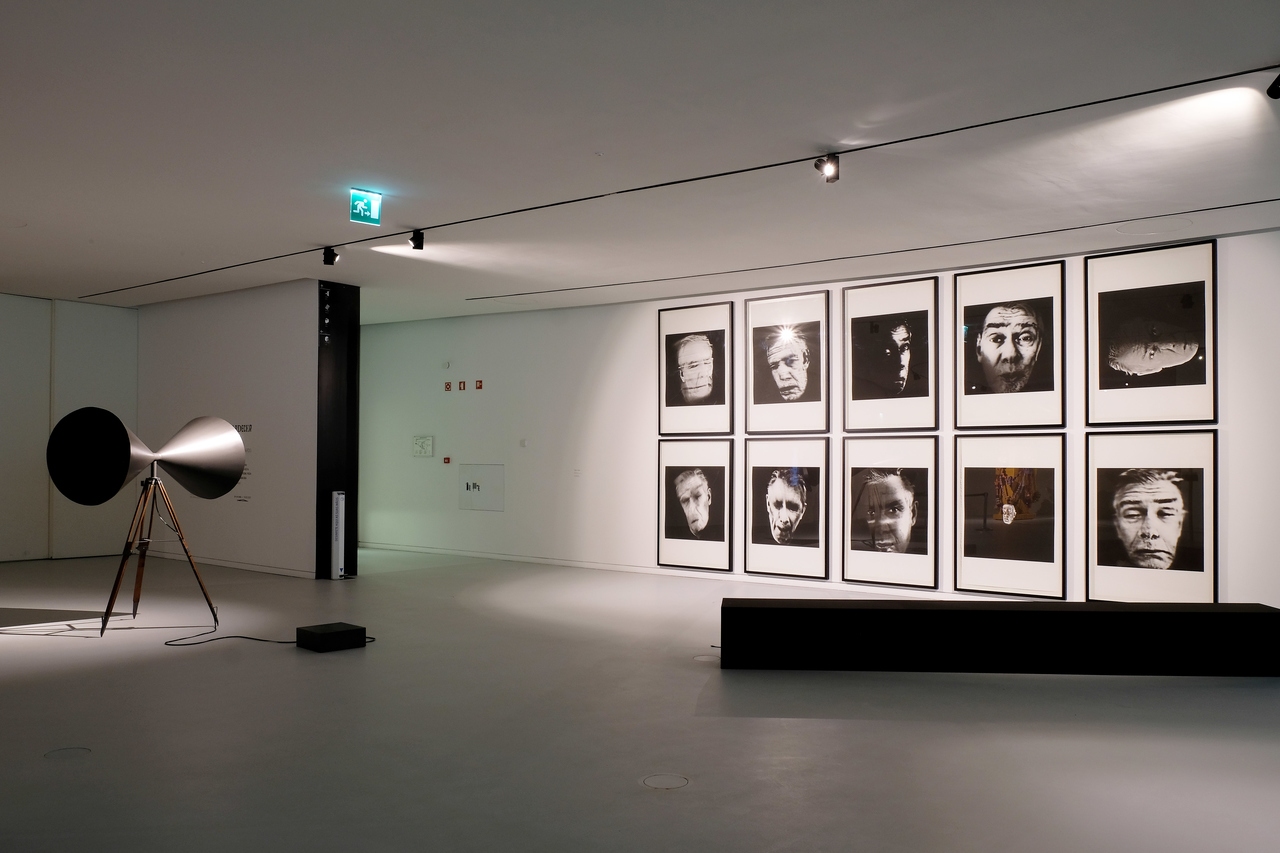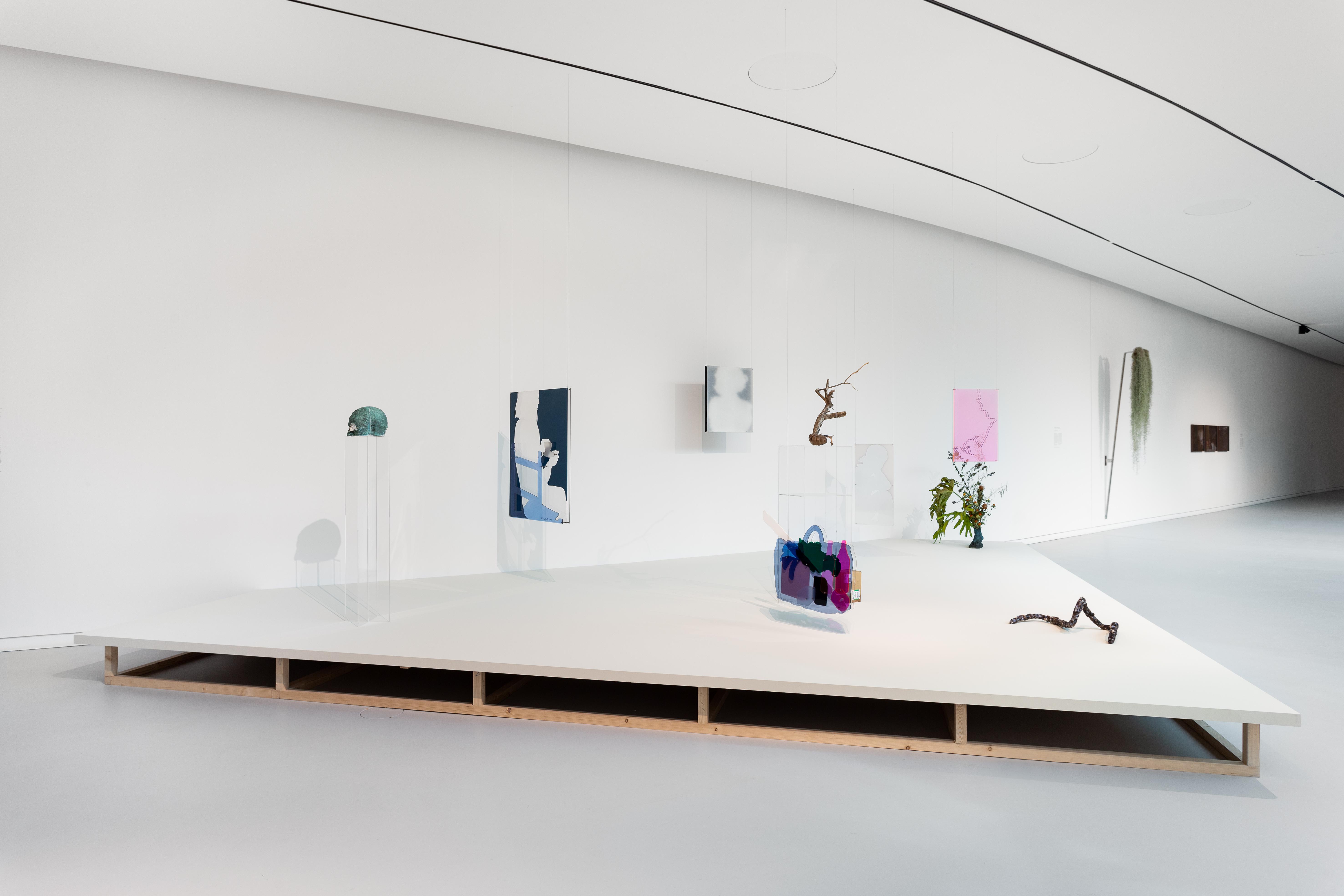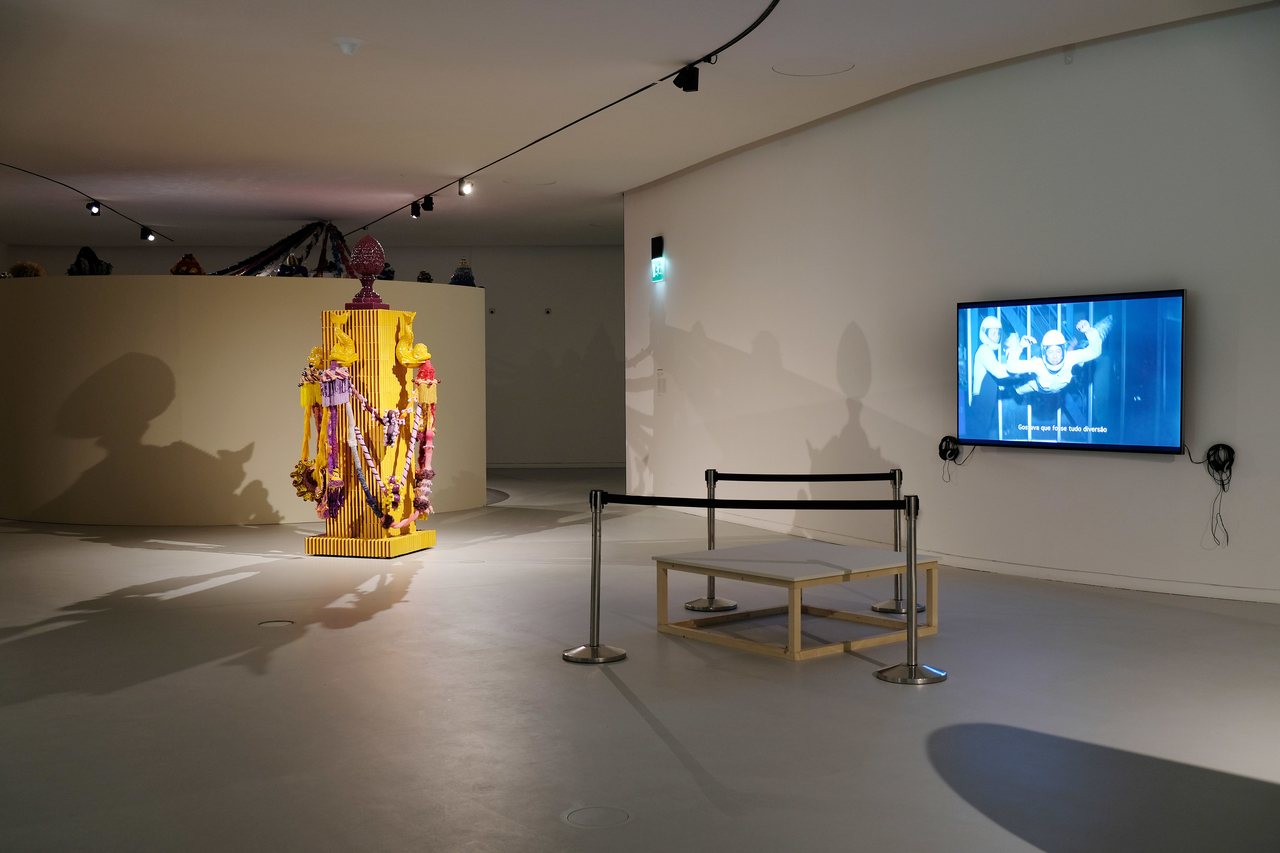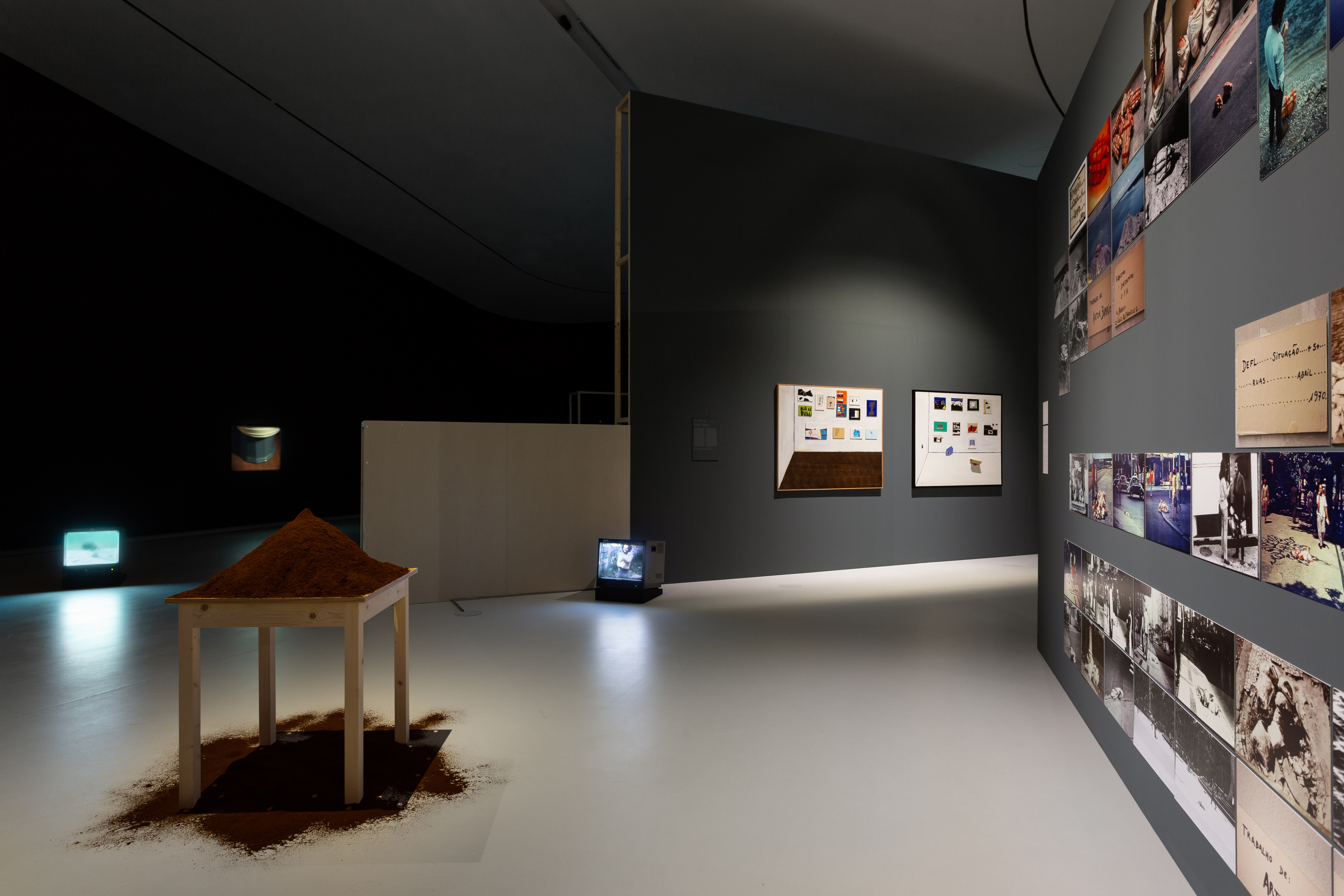Lourdes Castro was 70 years old when she won the first edition of the EDP Foundation Art Grand Prize, the first great career distinction attributed to an artist who, in 2020, was awarded with the Medal of Cultural Merit, "a long-deserved homage to a major Portuguese artist, not only due to her talent and creativity, but also due to her influence among contemporary creators, as an artist but also due to her aesthetic and ethical posture," says Graça Fonseca, Minister of Culture.
The desire to celebrate singular paths and languages is part of the DNA of the EDP Foundation's art awards - both the Grand Prize and the New Artists Award. Twenty years ago there were very few artistic awards. "When we came on the scene and distinguished people like, for example, Mário Cesariny, who was already known, not as a plastic artist, but as a poet, we showed that what we wanted with the awards was different from what already existed," says João Pinharanda. The mentor of the various awards of the EDP Foundation also points out that "a prize that, at the time, was the most valuable in terms of money, and in addition, offered an exhibition and working conditions to artists like no other prize before or since has done, to show up in the artistic panorama of a country like Portugal meant that these EDP prizes created a 'before' and an 'after' in the Portuguese arts. The award worked as a kind of accelerator for the careers of these artists. And not only for those who won the awards, but those who participated in the various exhibitions." For João Pinharanda, "the EDP awards were pioneers and absolutely essential, taking into account the national landscape."
"We always gave the prizes to people who were not expecting them and not because they had done something interesting the previous year, but because they actually had an interesting life and career," says João Pinharanda.
A portrait, moreover, undisputed, even by the younger generations, as is the case of Inês Grosso, curator at MAAT. When the awards began she was still a high school student. But she never doubted the importance of these awards, which proved to be parallel to her own path: "The awards have become pillars of the EDP Foundation, but also references for those who are studying arts, and for those who work in art. I was studying to become a curator at the same time as the generations of the New Artists Award were being created."

© Gonçalo Rosa Silva
Give another importance to the word confinement
The exhibitions have always been part of the EDP Foundation's prizes. This is because, both in the Grand Prize and in the New Artists Award, part of the reward is the opportunity to have an exhibition, individual or collective. For some of these artists, especially in the early years of the New Artists Award, this was, moreover, their first great exhibition opportunity.
That is why it seemed a natural solution, that the two decades of awards were marked precisely in this way: through an exhibition, inaugurated in October 2020 and abruptly interrupted by another confinement, due to the aggravation of the pandemic. Interestingly, it was in the isolation of the first confinement that the exhibition Um Oasis ao Entardecer was born, as explained by curator Inês Grosso: "The exhibition was conceived during the confinement, which meant that artists were more available - this exhibition was a true ''oasis,'' when so many projects were being cancelled or postponed. From the beginning we knew that we wanted to celebrate the importance of artists and awards in a national context, without, however, creating a trophy hall and much less putting artists in competition between them."

© Bruno Lopes
Once again influenced by the pandemic scenario, Inês Grosso outlined an exhibition where the word "contamination" gained a positive meaning, contrary to what the daily news was. "We were hearing the word contamination every day and realized that we wanted, in this exhibition, to try encounters and contaminations, a moment of joint celebration, without hierarchies - all artists who won, who made national and international careers - without giving too much importance to generational differences, but instead highlighting similarities."
The artists involved - all who have already won an EDP Foundation award - were then asked to look at the word contamination in an optimistic way and to celebrate in this exhibition their paths, but also the paths of other winners who have contaminated them in a positive sense. Thus, André Romão created a section in plexiglass in honor of Lourdes Castro, Vasco Araújo celebrated Mário Cesariny's poetic work and Gabriel Abrantes created a children's book inspired by the work of Eduardo Batalha.

© Gonçalo Rosa Silva
The future of art in times of pandemic
The twenty years of the EDP Foundation awards were marked by what was surely one of the most difficult years for the artistic creation of which there is memory, not only in Portugal, but in the world. And the adversity continues in the year 2021, which began with another wave of the COVID-19 pandemic and the closure of the cultural equipment in Portugal - which meant that the exhibition Um Oásis ao Entardecer had to be suddenly halted in January 2021.
This year a new Grand Prix will be announced and a New Artists Award will be bestowed. Inês Grosso has no doubt: "The Foundation's awards gain even more importance in the scenario in which we live. The situation is difficult for many artists. The distinction has been very important over the past few years to allow for a number of artistic projects that would hardly be possible without the support of institutions such as the EDP Foundation."

Créditos: Bruno Lopes
But in this creative oasis, both Inês Grosso and João Pinharanda are optimistic about the creative process resulting from the pandemic, as the MAAT curator highlights: "Artists are having a lot of time to think and to be on their ateliers completely isolated. I want to believe that when we return to normality, we will have very good works. This works may reflect the situation, insecurities and crises, but I think we are going to have a turning point."
Luísa Cunha is the winner of the EDP Foundation Art Grand Prize 2021

The artist Luisa Cunha is the winner of the 2021 edition of the Fundação EDP Arte Grand Prize.
In addition to the monetary prize, the artist will be honored through a retrospective and / or anthological exhibition, and the publication of a catalog that constitutes an important historiographical and bibliographical reference.
Learn more about the artist, here.
For Miguel Coutinho, the EDP Foundation's work in supporting the arts is even more important in a pandemic scenario.
>> Read the interview by Miguel Coutinho, Administrator and General-director of the EDP Foundation.

Art is certainly one of the mainstays of the work carried out by the EDP Foundation (Fundação EDP). How has art become so important to the Foundation?
Before setting up the Foundation, EDP had decided to start an art collection, create two awards, and hold exhibitions at Central Tejo. Eventually, this led to the establishment of the EDP Foundation. Although the collection was meant to comprise Portuguese contemporary art only, the museum's work has always been more comprehensive than that: it has always invited foreign artists and curators, a trend that has been gradually been intensifying. This development happened naturally, gradually revealing its own demands for greater ambition, which culminated in the decision to build MAAT.
The EDP Foundation has an important contemporary art collection. Is the identification and purchase of art pieces an endless work?
Building an art collection is, first and foremost, a challenging and necessarily judicious work, given the quantity and quality of Portuguese artists in recent decades. Choices are always subjective, but the EDP Foundation has been focusing on the most relevant and established names in Portuguese contemporary art, while also paying attention to those who seem to be the most promising young artists.
What is the importance of the EDP awards for a portrait of the arts in Portugal over the past 20 years?
I think the relevance and longevity of an award depend on the success of its choices. You could reconstruct a substantial part of the history of Portuguese contemporary art from the list of EDP Grand Award and EDP New Artists Award winners. Of course, we could have picked other winners, especially for the Grand Award. There are many, many artists who deserve this award. But in the case of the New Artists Award, we are proud to have picked and/or discovered names such as Joana Vasconcelos, Leonor Antunes, Paiva & Gusmão, Vasco Araújo, Carlos Bunga, Gabriel Abrantes, and André Romão, among others.
In the previous edition of the New Artists Award, which was won by Diana Policarpo, there was a rich thematic breadth, from the exploration of color and materials to the condemnation of environmental impacts in Nepal. Does being a patron of the arts mean setting no limits or agendas for the artists that Fundação EDP supports?
There is only one possible answer to that question: freedom of creation is a constitutional right confirmed by the Patronage Law.
Has there been any resistance over the past 20 years regarding the role of the EDP Foundation as a patron of the arts?
Art is, by definition, anti-system, and although EDP is not part of the system, it is institutional.
I believe that the EDP Foundation has, on its own merit, a very relevant place in the area of Culture and the Arts. We don't feel like a foreign body just because we are a corporate foundation. In fact, for the sake of Culture, there should be not one but ten EDP Foundations. And this place we have is due to our consistent, tireless work in supporting Portuguese art and artists, showing their work first at Museu da Electricidade and then at MAAT, rewarding artists, sponsoring their participation in international fairs such as the Venice Biennale, contributing to bringing an art fair such as Arco to Lisbon, or publishing a thought-provoking magazine such as Electra, which in every issue seeks a dialogue between Art and many other fields.
Do awards - such as the EDP Foundation awards - become particularly relevant in a scenario such as the one we are experiencing now, which is especially damaging to the arts/culture industry?Does the responsibility of the EDP Foundation become even more critical, given the increasingly difficult situation the arts are facing?
The EDP Foundation has always had, since its inception, an active presence, a responsibility, in the Social Investment and Culture fields. Its track record reflects EDP's positioning, which means that it is aware of the greatest flaws within our Society, but also of what can make us a better-informed community, with greater civic and critical awareness. Unfortunately, the pandemic has underlined the importance and value of our work.
You once said that “one of the distinctive features of the EDP Foundation is that it has always been a patron of the arts.” Is this distinctive feature unquestionable? Or could the challenging times we are facing jeopardize it?
These are not the first challenging times we face, and the EDP Foundation has always been around, thanks to EDP and its shareholders, working in areas which we consider crucial, such as Social Investment and Culture.
What is the role of MAAT in this relationship?
MAAT will continue to stand out as a museum with high-quality programming that combines more specialized exhibitions, in line with the current curatorial program, with shows that appeal to a wider, less contemporary art-savvy audience. And it will continue to prioritize its relationship with Portugal's artistic community (artists, curators, other museums and institutions, gallery owners, critics, etc.).

